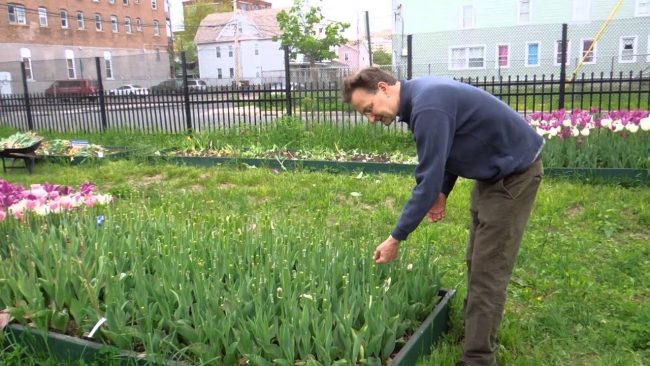Understanding and Addressing Pale Ferns
Ferns are beloved for their lush, vibrant foliage that adds a touch of elegance to any indoor or outdoor space. However, when a fern starts to look pale, it can be concerning for plant owners. A pale fern may indicate an underlying issue that needs to be addressed to restore its health and appearance. In this comprehensive article, we will explore the common reasons why ferns turn pale and provide practical solutions to help your fern regain its vibrant green color.
The Importance of Fern Coloration
The color of a fern’s leaves is a direct reflection of its overall health and vigor. Healthy ferns typically display deep green, lush foliage due to the presence of chlorophyll, the pigment responsible for photosynthesis. When a fern starts to look pale, it can be a sign of stress or an imbalance in its growing conditions.
Common Causes of Pale Ferns
- Insufficient Light
- Ferns require varying amounts of light depending on the species, but most prefer bright, indirect light.
- If a fern is not receiving enough light, it may start to look pale or etiolated (stretched out) as it tries to reach for more light.
- Overwatering or Underwatering
- Ferns are sensitive to both overwatering and underwatering, which can lead to pale, unhealthy leaves.
- Overwatering can cause root rot and prevent the plant from absorbing nutrients, while underwatering leads to dehydration and stress.
- Nutrient Deficiencies
- Ferns require a balanced supply of essential nutrients, such as nitrogen, phosphorus, and potassium, to maintain their vibrant color.
- A lack of these nutrients can cause the leaves to turn pale or yellow.
- Temperature Stress
- Most ferns prefer cool to moderate temperatures, typically between 60°F and 75°F (15°C and 24°C).
- Exposure to extreme temperatures, either hot or cold, can cause stress and lead to pale leaves.
- Low Humidity
- Many ferns originate from tropical and subtropical regions and prefer high humidity levels.
- If the air is too dry, it can cause the leaves to lose moisture and turn pale or brown at the tips.
- Pests and Diseases
- Ferns can be susceptible to various pests, such as spider mites, scale insects, and aphids, which can cause discoloration and damage to the leaves.
- Fungal diseases, such as powdery mildew or leaf spot, can also lead to pale or discolored foliage.
Diagnosing the Problem
To effectively address the issue of pale fern leaves, it is crucial to identify the underlying cause. Here are some steps to help you diagnose the problem:
- Inspect the Light Conditions
- Assess the location of your fern and determine if it is receiving enough bright, indirect light.
- If the fern is in direct sunlight, consider moving it to a spot with more filtered light.
- Check the Soil Moisture
- Stick your finger into the soil to check the moisture level. The soil should be consistently moist but not waterlogged.
- If the soil is dry, water the fern thoroughly. If it is soggy, allow the soil to dry out slightly before watering again.
- Examine the Leaves
- Look for signs of nutrient deficiencies, such as yellowing between the veins or pale, stunted growth.
- Check for signs of pests or diseases, such as webbing, insects, or discolored spots on the leaves.
- Monitor Temperature and Humidity
- Use a thermometer and hygrometer to measure the temperature and humidity levels around your fern.
- Ensure that the fern is not exposed to extreme temperatures or low humidity levels.
Solutions to Restore Vibrant Color
Once you have identified the cause of the pale leaves, you can take appropriate steps to remedy the situation:
- Adjust Light Conditions
- If the fern is not receiving enough light, move it to a brighter location with indirect sunlight.
- If it is in direct sunlight, provide some shade or move it to a spot with more filtered light.
- Optimize Watering Practices
- Water the fern when the top inch of soil feels dry to the touch, but avoid letting the soil dry out completely.
- Ensure that the pot has adequate drainage holes to prevent waterlogging.
- Provide Balanced Nutrition
- Apply a balanced, water-soluble fertilizer every 4-6 weeks during the growing season to replenish essential nutrients.
- Follow the instructions on the fertilizer package for proper application rates.
- Maintain Ideal Temperature and Humidity
- Keep the fern in a consistent temperature range, ideally between 60°F and 75°F (15°C and 24°C).
- Increase humidity levels by misting the leaves regularly, using a pebble tray, or placing a humidifier nearby.
- Monitor for Pests and Diseases
- Regularly inspect the fern for signs of pests or diseases, such as webbing, insects, or discolored spots on the leaves.
- If you suspect a pest or disease, take action promptly to prevent further damage. Use insecticidal soap, neem oil, or fungicides as needed.
Preventative Measures
To prevent future occurrences of pale leaves in your ferns, consider the following preventative measures:
- Choose the Right Fern for Your Conditions
- Select a fern variety that is well-suited to your growing conditions, such as light exposure and humidity levels.
- Maintain Consistent Care
- Establish a regular watering schedule and stick to it, adjusting as needed based on the fern’s needs and environmental conditions.
- Provide consistent light levels and avoid sudden changes or fluctuations.
- Monitor for Signs of Stress
- Regularly inspect your fern for any signs of stress, such as pale leaves, stunted growth, or the presence of pests or diseases.
- Address any issues promptly to prevent further damage and restore the fern’s health.
- Repot as Needed
- Ferns may need to be repotted every 2-3 years to provide fresh soil and room for growth.
- Choose a pot that is slightly larger than the current one and use a well-draining potting mix formulated for ferns or houseplants.
Conclusion
Pale fern leaves can be a sign of various underlying issues, including insufficient light, improper watering, nutrient deficiencies, temperature stress, low humidity, or pest and disease problems. By diagnosing the problem and implementing appropriate solutions, you can restore your fern’s vibrant green color and maintain its health in the long term. Regular monitoring and preventative measures will help ensure that your fern thrives and continues to add beauty to your indoor or outdoor space.
FAQ
- Why are my fern leaves turning pale?
- Pale fern leaves can indicate insufficient light, overwatering, underwatering, nutrient deficiencies, temperature stress, low humidity, or pest and disease problems.
- How much light do ferns need?
- Most ferns prefer bright, indirect light. Avoid placing them in direct sunlight, as it can scorch the leaves.
- How often should I water my fern?
- Water your fern when the top inch of soil feels dry to the touch, but avoid letting the soil dry out completely. The frequency may vary depending on the size of the pot, soil type, and environmental conditions.
- What type of fertilizer should I use for my fern?
- Use a balanced, water-soluble fertilizer formulated for ferns or houseplants. Apply it every 4-6 weeks during the growing season, following the instructions on the package.
- How can I increase humidity for my fern?
- Mist the leaves regularly, use a pebble tray filled with water, or place a humidifier nearby. Grouping ferns together can also create a more humid microclimate.
Table of Key Factors
| Factor | Ideal Condition | Link |
|---|---|---|
| Light | Bright, indirect light | Wikipedia: Fern |
| Moisture | Consistently moist, well-draining soil | USDA: Watering Plants |
| Humidity | High humidity levels | Wikipedia: Humidity |
| Nutrients | Balanced fertilizer every 4-6 weeks | EPA: Fertilizers and Pesticides |
| Temperature | 60°F to 75°F (15°C to 24°C) | Wikipedia: Temperature |



